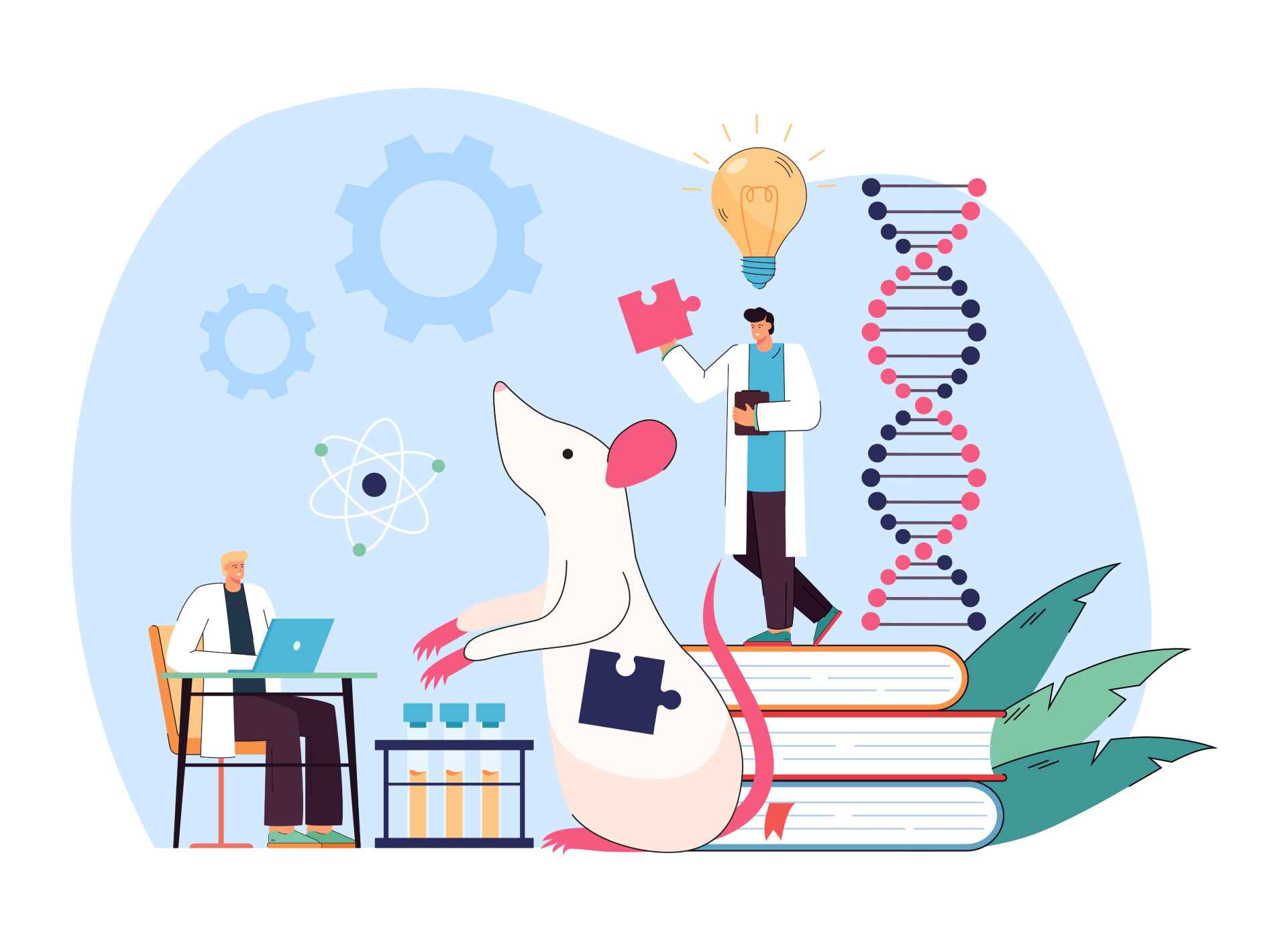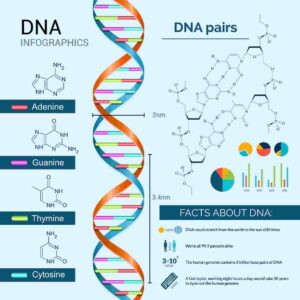
This essay was originally written for a competition on genetic engineering in veterinary medicine. I’m sharing it here to explore how this field might affect the future of animal health.
Genetic engineering has given veterinary medicine something unprecedented: the ability to rewrite life at its most fundamental level. Genetic manipulation is done using CRISPR-CAS9, which is used to add, remove or alter DNA. Genetic modification offers great benefits including gene therapy, disease resistance in livestock, vaccine development, species conservation, and transgenic animals that are widely used in research. But all this comes with consequences, such as the negative impacts observed on biodiversity and animal welfare. This essay will explore the role of genetic engineering in veterinary medicine and its potential impacts on animal welfare and biodiversity.
The first transgenic animal was a mouse, created by Rudolf Jaenisch in 1974 and the first commercialized animal? A fluorescent fish in 2003. The most common use of genetic engineering on animals is in the livestock industry in making the animals more resistant to diseases and reducing the need for antibiotics. Examples are seen in poultry, with the cytokine gene editing, improving the chicks resistance to diseases, and in altering the pigs’ gene CD-163 to prevent them from getting porcine reproductive and respiratory syndrome virus. Genetic engineering improves vaccines by allowing scientists to target specific DNA sequences, producing safer and more precise antigens. Additionally, this technology is essential for conservation through cloning of specific species and can be used for “de-extinction”, such as the woolly mammoth. Moreover, transgenic animals are essential for scientific research, especially in the study of inherited diseases.
But benefits come with risks and consequences. One main use of genetic engineering in veterinary medicine is gene therapy for domestic companions. It cures animals from conditions that could be fatal for them, such as blindness, haemophilia, or muscular dystrophy, by correcting the underlying genetic problem, usually a faulty or missing gene. This suggests that genetic engineering can be positive, through the treating of previously untreatable inherited diseases. Despite these positive impacts, many consequences are observed in transgenic animals, such as premature death, developmental defects, and many sorts of suffering. Real life examples are the enlarged tongues in rabbits, extra vertebrae in pigs, and udder disease in genetically altered cows, each affecting the mental and physical wellbeing of the targeted individuals. Therefore, are the risks worth the rewards?
Lastly, the risks of genetic engineering in biodiversity. A scenario would be that a transgenic animal is released into the environment and ends up interbreeding with wild populations, transferring its mutated genes. This would lead to the creation of invasive species, to the loss of wild diversity, and the extinction of natural variants. An example of this would be the genetically engineered salmon, that grows faster than natural, which, if released in rivers, would outcompete wild salmon, disrupt the food chain and create genetic pollution. On a broader scale, there are still many unknowns concerning gene drives and the long term ecological impacts are still uncertain. This implies that the benefits exist but that they do not come without risks, ones that are irreversible.
Overall, this essay demonstrates that genetic engineering plays a crucial role in veterinary medicine, and that it has a huge potential, but needs to be used cautiously, mindfully, and with regulations, always placing animal welfare at the centre. Used wisely, genetic engineering can be a powerful tool in veterinary medicine; but used recklessly, it will cause irreversible harm.
References:
-
- Farm Journal (2023). Genetically Modified Pigs. [online] YouTube. Available at: https://www.youtube.com/watch?v=FKrLXdkRU0s [Accessed 14 Sep. 2025].
- MedlinePlus (2022). What Is Gene therapy? [online] medlineplus.gov. Available at: https://medlineplus.gov/genetics/understanding/therapy/genetherapy/.
- BrainyQuote. (n.d.). Genetic Engineering Quotes. [online] Available at: https://www.brainyquote.com/topics/genetic-engineering-quotes.
- Knockout mouse | medical research | Britannica. (2019). In: Encyclopædia Britannica. [online] Available at: https://www.britannica.com/science/knockout-mouse.
- Wikipedia Contributors (2019). Genetically modified animal. [online] Wikipedia. Available at: https://en.wikipedia.org/wiki/Genetically_modified_animal.
- Ciftci, K. and Trovitch, P. (2000). Applications of genetic engineering in veterinary medicine. Advanced Drug Delivery Reviews, [online] 43(1), pp.57–64. doi:https://doi.org/10.1016/S0169-409X(00)00077-6.
- Ord, S. (2022). How De-Extinction Works: Methods, Examples and Step-by-Step Process. [online] colossal.com. Available at: https://colossal.com/how-de-extinction-works/.
- Mayo Clinic (2024). Gene Therapy. [online] Mayo Clinic. Available at: https://www.mayoclinic.org/tests-procedures/gene-therapy/about/pac-20384619.
- Macfarlane, N.B.W., Adams, J., Bennett, E.L., Brooks, T.M., Delborne, J.A., Eggermont, H., Endy, D., Esvelt, K.M., Kolodziejczyk, B., Kuiken, T., Oliva, M.J., Peña Moreno, S., Slobodian, L., Smith, R.B., Thizy, D., Tompkins, D.M., Wei, W. and Redford, K.H. (2022). Direct and indirect impacts of synthetic biology on biodiversity conservation. iScience, [online] 25(11), p.105423. doi:https://doi.org/10.1016/j.isci.2022.105423.
- Government of the Netherlands (2019). Consequences of GMOs for biodiversity. [online] Government of the Netherlands. Available at: https://www.government.nl/topics/biotechnology/consequences-of-gmos-for-biodiversity.
- Friends of the Earth. (n.d.). Genetically Engineered Animals: From Lab to Factory Farm. [online] Available at: https://foe.org/resources/genetically-engineered-animals-lab-factory-farm/.
- BBC (2019). Variation – AQA – Revision 7 – GCSE Biology (Single Science) – BBC Bitesize. [online] BBC Bitesize. Available at: https://www.bbc.co.uk/bitesize/guides/zsg6v9q/revision/7.
- Read ‘Animal Biotechnology: Science-Based Concerns’ at NAP.edu. (n.d.). [online] nap.nationalacademies.org. Available at: https://nap.nationalacademies.org/read/10418/chapter/7#77.
